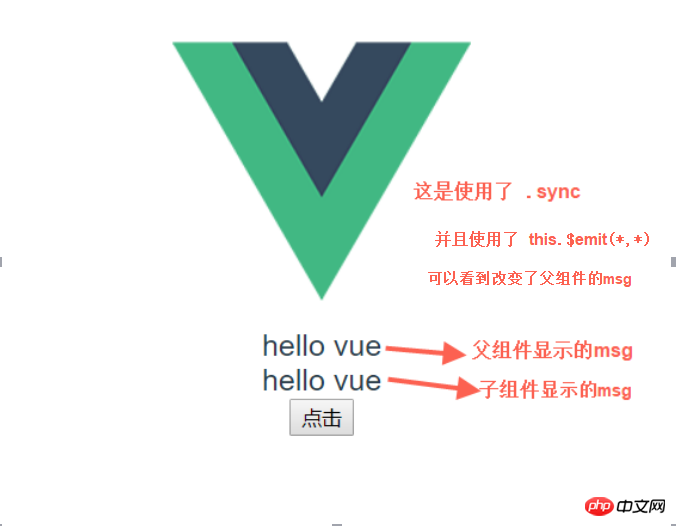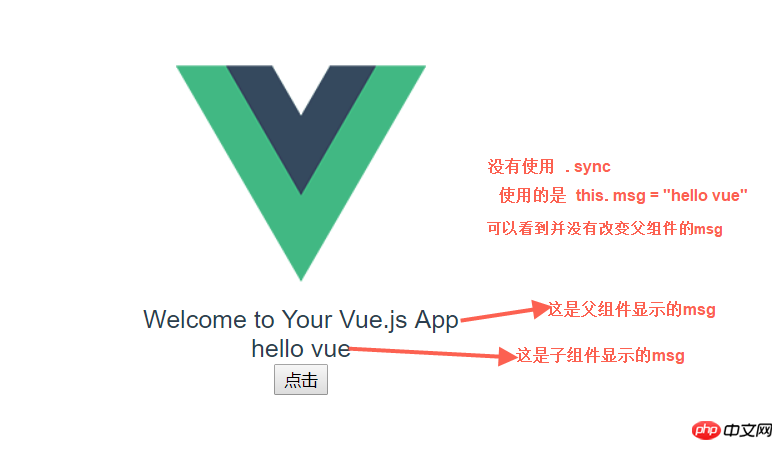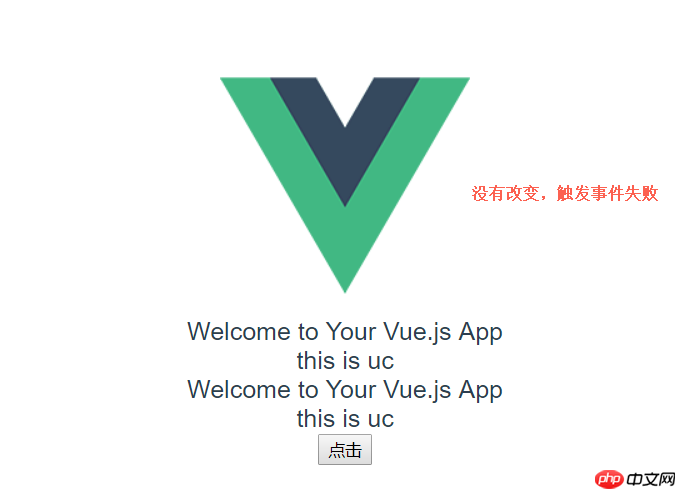Home >Web Front-end >JS Tutorial >Use vue+.sync modifier in the project
Use vue+.sync modifier in the project
- php中世界最好的语言Original
- 2018-06-07 10:22:121477browse
This time I will bring you the use of vue .sync modifier in the project. What are the precautions for using the vue .sync modifier in the project? The following is a practical case, let's take a look.
In some cases, we may need to perform "two-way binding" on a prop (property for parent-child components to pass data).
The functions provided by the .sync modifier in vue 1.x. When a child component changes the value of a prop with .sync, the change is also synchronized to the value bound in the parent component.
This is convenient, but can also cause problems because it breaks the one-way data flow. (Data flows from top to bottom, and events flow from bottom to top)
Since the code for changing the prop of a subcomponent is no different from the code for ordinary state changes, so when you just look at the code of the subcomponent, you Silently changing the parent component's state without knowing it's appropriate.
This will bring high maintenance costs when debugging applications with complex structures. So we removed .sync in vue 2.0.
But in actual applications, we find that .sync still has its applications, such as when developing reusable component libraries. (Stupid ○△○)
All we need to do is to make the code that changes the state of the parent component in the child component easier to distinguish.
So starting from vue 2.3.0, we reintroduced the .sync modifier, but this time it only exists as a compile-time syntax sugar. It will be automatically expanded into a v-on listener that automatically updates the properties of the parent component.
For example
<child :foo.sync=”msg”></child> 就会被扩展为: <child :foo=”bar” @update:foo=”val => bar = val”> (@是v-on的简写)
When a subcomponent needs to update the value of foo, it needs to explicitly trigger an update event: this.$emit(“update:foo”, newValue);
Initial state:

State after click:



The principle is that the parent component passes a function to the child component: function (newValue) { this.msg = newValue; }

When When using an object to set multiple properties at once, this .sync modifier can also be used with v-bind.
For example: <child v-bind.sync = “{ message: msg, uC: uc}”></child> (cannot be written as :.sync="{ *********}", otherwise an error will be reported)
This example will add v-on listeners for updates to message and uC at the same time.



I believe you have mastered the method after reading the case in this article. For more exciting information, please pay attention to other related articles on the php Chinese website!
Recommended reading:
Node.Js generates Bitcoin address (with code)
##vue.js element-ui Create a menu tree structure
The above is the detailed content of Use vue+.sync modifier in the project. For more information, please follow other related articles on the PHP Chinese website!
Related articles
See more- An in-depth analysis of the Bootstrap list group component
- Detailed explanation of JavaScript function currying
- Complete example of JS password generation and strength detection (with demo source code download)
- Angularjs integrates WeChat UI (weui)
- How to quickly switch between Traditional Chinese and Simplified Chinese with JavaScript and the trick for websites to support switching between Simplified and Traditional Chinese_javascript skills

